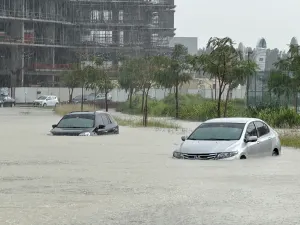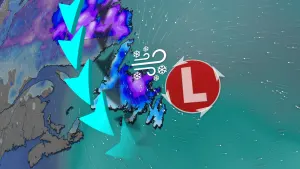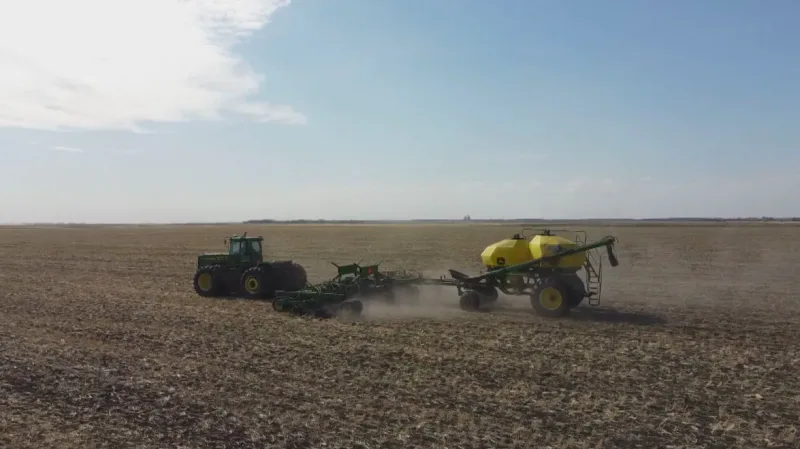
'Extreme drought' threatening parts of the Prairies, says Agriculture Canada
Manitoba farmer Chuck Fossay has never seen his fields this dry.
As he scoops up a handful of black top soil, it runs through his fingers like sand.
"It's just bone dry. And there's nothing there to support the seed and the crop to grow," he said.
Farming near Starbuck, Man., about 20 minutes west of Winnipeg, Fossay is trying to get his canola into the ground.
He's planting a little deeper this year, hoping to find moisture so the seeds can germinate and start growing.
He hopes that with some well-timed rain, he can still salvage a near-average crop but with conditions this dry, he said it's likely compromised before it's even planted.
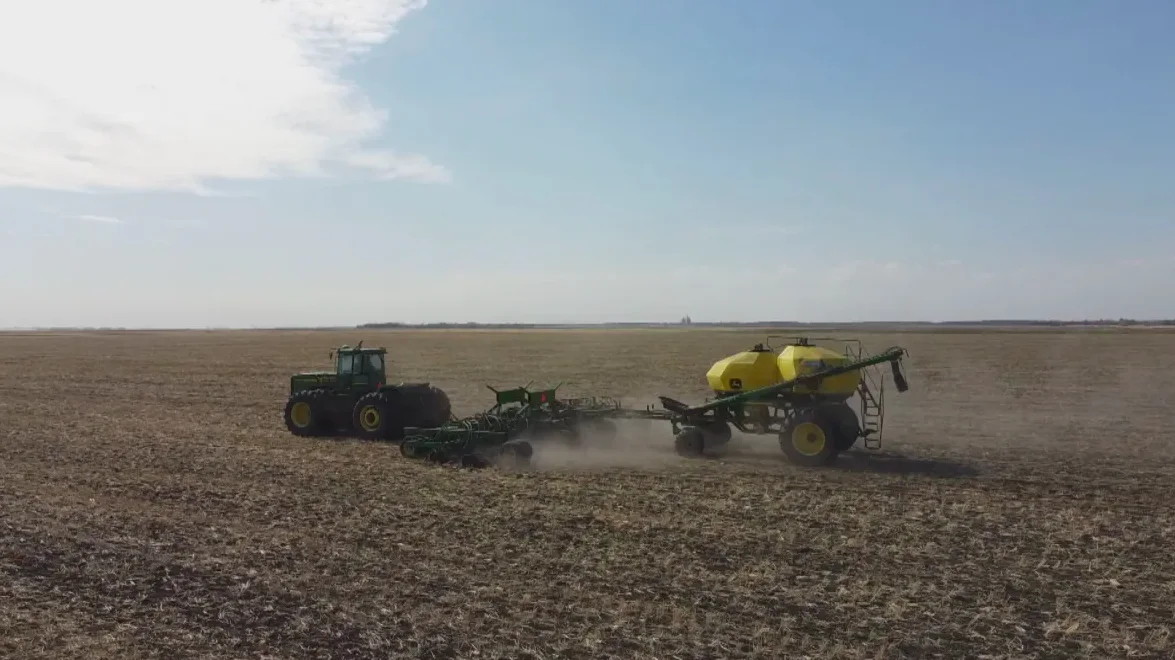
Despite drought conditions, Chuck Fossay is still trying to get a crop into the ground. (Jaison Empson/CBC)
"Dry is dry and nothing grows without water. That's just a fact of life. You need water to live. And if you don't have enough water, nothing grows," Fossay said.
"If we don't get a rain, a nice, general soaking rain probably the next two weeks, we're probably talking a crop failure out here in Manitoba."
'EXTREME DROUGHT'
It will take more than just one day of rain.
An abnormally dry fall is being followed by one the driest springs in recent memory.
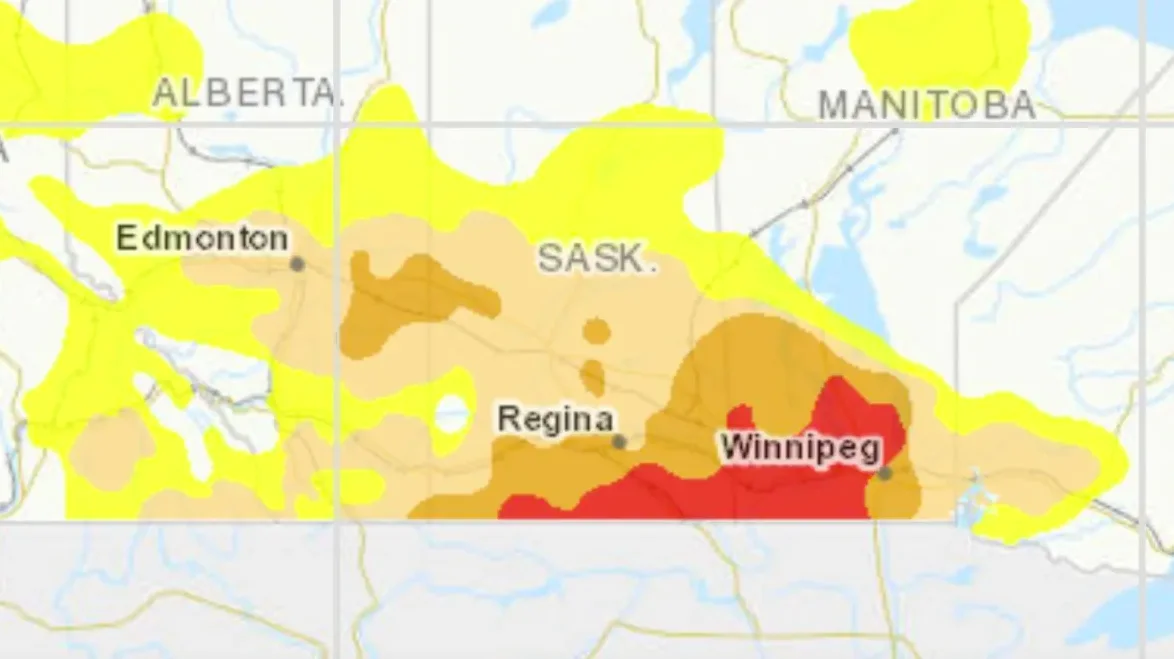
On this Canadian Drought Monitor map, red areas depict extreme drought conditions in Manitoba and Saskatchewan as of April 30, 2021. (Agriculture and Agri-Food Canada)
Agriculture and Agri-Food Canada considers southwestern Manitoba and southeastern Saskatchewan to be under "extreme drought" conditions, while most of the rest of Prairies are also considered to be experiencing moderate drought.
'Extreme drought' in parts of Sask.: Ag Canada "Parts of it are close to record dry conditions when you look at soil moisture, that's less than 40 per cent of normal," said John Pomeroy, a Canada Research Chair in Water Resources and Climate Change. He works out of the University of Saskatchewan's lab in Canmore, Alta.
While droughts are part of the agricultural cycle, Pomeroy said what is unusual this year is the scope of the dryness, extending "from Vancouver Island to southern Quebec, down into the United States, into California, right into Mexico ... it's enormous."
ECONOMIC IMPACTS
Also enormous is the potential impact on Canada's economy.
If these conditions persist, it won't just be farmers hit hard. For consumers, it can mean higher grocery prices.
Water is also a critical resource in the resource and energy sectors; potash mining, oil production and hydroelectricity rely on it.
"Back about 20 years ago, there were four years where there was a $10-billion hit to the western Canadian economy from drought and 41,000 jobs lost in Saskatchewan alone. So there's an impact," Pomeroy said
"It's like losing the automotive industry out of southern Ontario."
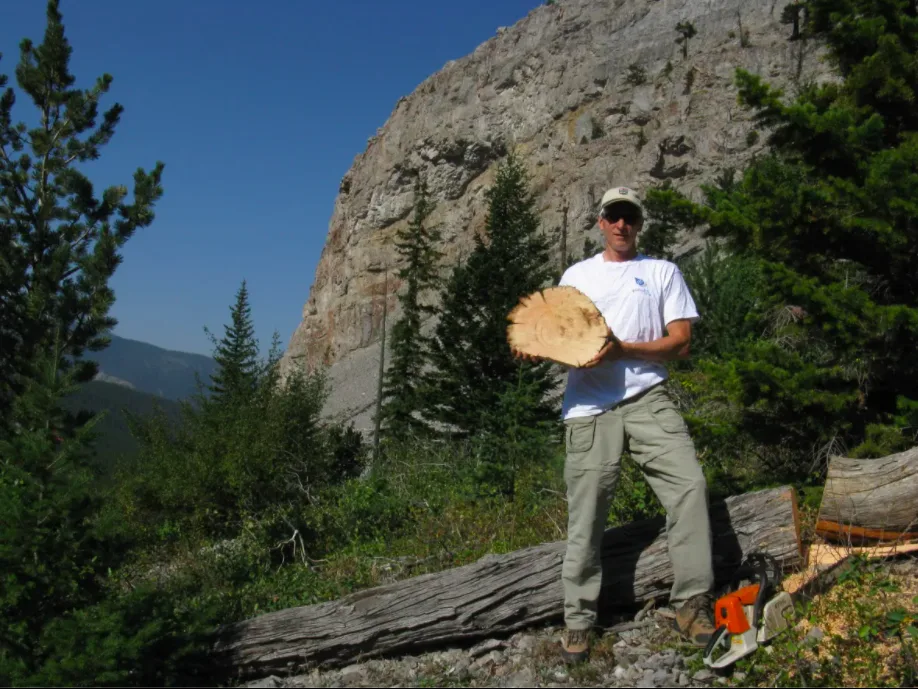
Dave Sauchyn is a senior research scientist at the University of Regina's Prairie Adaptation Research Collaborative. He says a major rainfall lasting days could be a billion-dollar storm, replenishing soil moisture and salvaging the growing season this year. (Dave Sauchyn/Submitted to CBC)
Drought and dry conditions can also threaten the water supply as rivers dry up and lake levels drop.
"There's a lot of small communities, rural communities that have a less than reliable water supply. So they might get their water, for example, from a shallow well, they might get their water from a reservoir and those water supplies are being depleted," said Dave Sauchyn, a professor and researcher with the University of Regina's Prairie Adaptation Research Collaborative.
He helped write a report on climate change impacts and approaches to adaptation.
Already, one community in southern Manitoba has started restricting water use, asking residents to cut their consumption by 25 per cent.
The province has also put a ban on campfires and access to back country trails in drought-affected areas, activities that have been extremely popular during the pandemic.
Near the Ontario border, a forest fire has already cause damage in Manitoba's Whiteshell Provincial Park.
But for those who rely on Mother Nature for their livelihoods, the stakes are high.
'CATTLE CANNOT SURVIVE WITHOUT WATER'
Close to the Manitoba-Saskatchewan border, Bill Campbell is worried about his own farm, but he's also hearing concerns from farmers across the province as president of Keystone Agricultural Producers, an advocacy group based in Winnipeg.
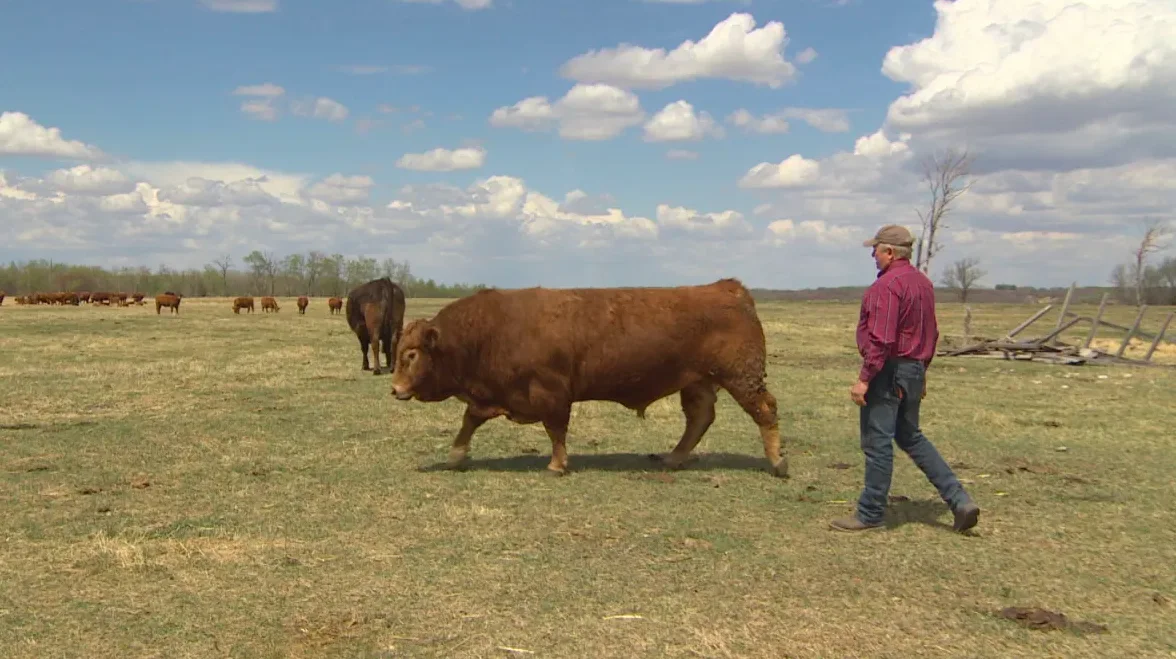
Bill Campbell is a cattle farmer and president of the Keystone Agricultural Producers. He worries the dry conditions mean he won't be able to grow grass for his cattle, and the dugouts and rivers they drink from will run dry. (Jaison Empson/CBC News)
"We always say that April showers bring May flowers. Well, it also brings me grass," Campbell said as he watched his cattle graze on grass that is brittle and dry.
"It becomes a major concern when we have limited forage reserves like bales in the yard or silage left over. And once you run out of that reserves, what do you do? You send them to pasture for a limited amount of time and they eat all that's there."
Looking at the Souris River on his land, Campbell points out rocks that should be covered with a metre of water that are now exposed.
"We rely on retention ponds, dugouts, springs, creeks, various water streams and a lot of them are dry and cattle will not survive without water," he said.
Story by Cameron MacIntosh and Karen Pauls, originally published on CBC.ca.







